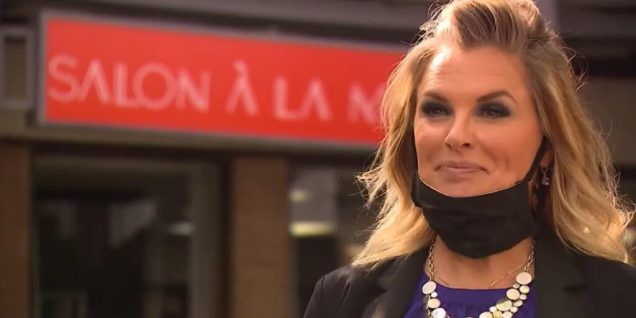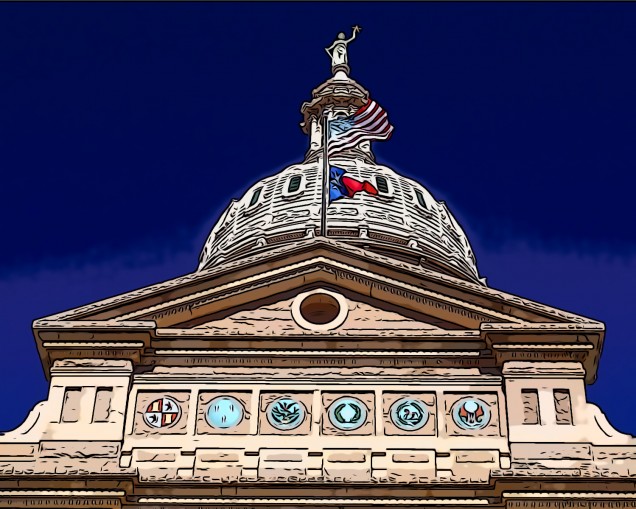Tagged: criminal justice reform
Disparate Impact in Machine Learning
Machine learning or “AI” is a novel approach to solving problems with software. Computer programs are designed to take large amounts of data as inputs, and recognize patterns that are difficult for humans to see. These patterns are so complex, it is sometimes unclear what parts of the data the machine is relying on to make a decision. This type of black box often produces useful predictions, but it is unclear whether the predictions are made based on forbidden inferences. It is possible that machine learning algorithms used in banking, real estate, and employment rely upon impermissible data related to protected classes, and therefore violate fair credit, housing, and labor laws.
Machine learning, like all programmed software, follows certain rules. The software generally compares images or numbers with
descriptions. For instance, facial recognition software may take as inputs pictures of faces, labeled with names, and then identify patterns in the face to associate with the name. Once the software is trained, it can be fed a picture of a face without a name, and the software will use the patterns it has developed to determine the name of the person that face belongs to. If the provided data is accurately prepared and labeled, the software usually works. If there are errors in the data, the software will learn the wrong things–and be unreliable. This principle is known as “garbage in, garbage out”–machine learning is only ever as reliable as the data it works with.
This causes problems when machine learning is applied to data that has racial bias baked-in to its core. Machine learning has been used in the criminal justice system to purportedly predict–based on a lengthy questionnaire–whether a perpetrator is likely to reoffend. The software was, after controlling for arrest type and history, 77% more likely to wrongfully predict that black defendants would re-offend than white defendants. Algorithms used by mortgage lenders charge higher interest rates to black and latino borrowers. A tenant screening company was found to rely partly on “arrest records, disability, race, and national origin” in its algorithms. When biases are already present in society, machine learning spots these patterns, uses them, and reinforces them.
 There are two ways of interpreting the racial effect of machine learning under discrimination law: disparate treatment and disparate impact. Disparate treatment is fairly cut-and-dry, it prohibits treating members of a protected class differently from members of an unprotected class. For instance, giving a loan to a white person, but denying the same loan to a similarly situated black person, is disparate treatment. Disparate impact is using a neutral factor for making a decision that affects a protected class more than an unprotected class. Giving a loan to a person living in a majority-white zip code, while refusing the same loan to a similarly situated person living in a black-majority zip code, creates a disparate impact.
There are two ways of interpreting the racial effect of machine learning under discrimination law: disparate treatment and disparate impact. Disparate treatment is fairly cut-and-dry, it prohibits treating members of a protected class differently from members of an unprotected class. For instance, giving a loan to a white person, but denying the same loan to a similarly situated black person, is disparate treatment. Disparate impact is using a neutral factor for making a decision that affects a protected class more than an unprotected class. Giving a loan to a person living in a majority-white zip code, while refusing the same loan to a similarly situated person living in a black-majority zip code, creates a disparate impact.
Whether machine learning creates disparate treatment, disparate impact, or neither, depends on the lens the system is viewed through. If the software makes a decision based on a pattern that is the machine equivalent to protected class status, then it is committing disparate treatment discrimination. If a lender uses the software as its factor in deciding whether to grant a loan, and the software is more likely to approve loans to unprotected class members than it is to approve loans to similarly situated protected class members, then the lender is committing disparate impact discrimination. And if a lender uses software that relies on permitted factors, such as education level, yet nevertheless winds up approving more loans for unprotected class member than it does for protected class members, the process could be discriminatory but not actionable under either disparate treatment or disparate impact theory.
The problem thus depends in part on understanding how the machine interprets the data–the exact information we often lack when machine learning is particularly complex. Thus, instead of relying on either disparate impact or disparate treatment theory, perhaps legal analysis of discrimination in machine learning should be entirely outcomes-driven. If, in fact, an algorithm wrongly predicts the likelihood of an event occurring, and that algorithm is less accurate for protected class members than unprotected class members, the algorithm should be considered prima facie discriminatory. Such a solution is viable for examining recidivism, interest rates and loan repayment, but it may be insufficient to cover problems like housing denials or employment. If an algorithm denies protected class members access to housing in the first place, it is difficult to falsify the algorithm’s decision, as nonpayment or other issues necessarily do not arise.
Machine learning offers great promise to escape the racial biases of our past if it is programmed to only rely on neutral factors. Unfortunately, it is currently impossible to determine which factors used by machines are truly neutral. Improperly configured machine learning has led to higher incarceration rates for black inmates and higher loan interest rates for black and latino homeowners. Such abuses of machine learning technology must be rejected by the law.
 Schecharya Flatté anticipates graduating from Boston University School of Law in May 2021.
Schecharya Flatté anticipates graduating from Boston University School of Law in May 2021.
Checks & Balances in a Pandemic
Recently, Shelley Luther, a Dallas based hair salon owner was jailed for refusing to close down her salon. The owner of Salon à la Mode continued operating her business despite a temporary restraining order last week from Dallas County State District Judge Eric Moyé. She continued operating despite a county official’s cease-and-desist letter ordering her to close.
As Luther faced criminal and civil contempt-of-court charges, Judge Moyé told Luther to admit her actions were selfish and wrong and promise that she would follow the law. CBS DFW reported that Luther refused responding,
“I have to disagree with you, sir, when you say that I’m selfish, because feeding my kids is not selfish. I have hair stylists that are going hungry because they’d rather feed their kids. So, sir, if you think the law is more important than kids getting fed, then please go ahead with your decision, but I am not going to shut down the salon.”
This answer did not please Judge Moyé, who immediately sentenced Luther to seven days in jail. Luther was not given an opportunity to go home or even have a phone call, if it hadn’t had been for her boyfriend her adolescent daughter would not have understood why her mother didn’t come home that night.
During the COVID-19 Coronavirus Pandemic, officials have agreed that jail is a breeding ground for the virus. In order to best protect the people, officials have quickly worked to release many non-violent prisoners for the sake of their health. Dallas county specifically released 1,000 inmates to ease crowding in the hopes to slow the spread of COVID-19 at the Dallas County jail. At a time where officials are releasing prisoners, I find it inappropriate to make an example of Luther by throwing her in jail. Not only was this action a risk to her health, but a risk to her family and those exposed to her when she would be released a week later. Additionally, if Luther had been asymptomatic there was a risk that she herself could have brought the virus into the prison.
Furthermore, Dallas County District Attorney John Creuzot announced policy reforms plans to end mass incarceration in Dallas by decreasing the use of excessively high bail amounts, no longer prosecuting most first-time marijuana offenses and not prosecuting thefts of personal items under $750 that are stolen out of necessity. These policy reforms were established to decrease the number of incoming prisoners. Again, at a time where officials are fighting to decrease prison populations, Moyé’s actions neglected to consider the bigger picture. A better alternative would have been a fine for each day she was in operation, with the money allocated to benefiting the community.
Due to public outcry, Gov. Greg Abbott modified his executive orders to remove confinement as a consequence for violating them. He stated:
“Throwing Texans in jail who have had their businesses shut down through no fault of their own is nonsensical, and I will not allow it to happen,” Abbott said in a statement Thursday. “That is why I am modifying my executive orders to ensure confinement is not a punishment for violating an order.”
His change supersedes local orders and Luther was subsequently released. Luther was fined $7,000 for violating a temporary restraining order against reopening her business. However, Lt. Gov. Dan Patrick pledged to step up and pay the fine on her behalf.
The COVID-19 Coronavirus is an unprecedented time in our nation’s history, with legislators unsure how to best regulate protective measures. State legislators have gained an enormous power with COVID-19 Coronavirus. Without a doubt aggressive government intervention has occurred during this health crisis. Historically, pandemics have led to an expansion of the power of the state. Looking towards the future, legislators will have to work to strike a balance between protective regulations and domineering policies.
 Diana Alexandra Martinez anticipates graduating from Boston University School of Law in May 2021.
Diana Alexandra Martinez anticipates graduating from Boston University School of Law in May 2021.
At Last: New York Remembers the Adolescence of its Juveniles Offenders
On April 10th of this year, New York became the 49th state to pass legislation ending the treatment of 16 and 17 year olds as adults in the criminal justice system. Assembly Speaker Carl Heastie touted the bill’s passage as a “tremendous victory for communities across the state that have endured senseless tragedies and called on the Legislature to deliver a justice system that recognizes the difference between a child and an adult.” While New York was one of only two states to continue to prosecute these juveniles as adults, the Assembly had been working to pass similar legislation for over 12 years.
The prosecution of juveniles in adult criminal court has been proven to have serious lifelong consequences. The human brain is not fully developed until the age of 25, before juveniles mature they often lack impulse control and the ability to anticipate and understand the consequences of their actions. Adolescents tend to be receptive to interventions, responding well to juvenile treatment and services by learning to make responsible choices and ending delinquent behavior. Studies show that youth offenders prosecuted and sentenced in the adult criminal justice system are 34% more likely to be re-arrested than juveniles who are charged in the youth justice system. In addition to the impact that the adult criminal justice system has on the juvenile’s future behavior, youth offenders detained in adult prisons are more likely to be beaten by staff, sexually assaulted, 50% more likely to be attacked with a weapon, and are 36 times more likely to commit suicide while detained.
New York’s Raise the Age bill has multiple facets. Under the new legislation, 16 and 17 year olds accused of misdemeanors will be sent to Family Court. Felony cases, however, will remain in adult criminal court in a new section called the “youth part,” which will house judges trained in Family Court law. After 30 days, 16 and 17 year olds charged with nonviolent felonies will be sent to Family Court unless a district attorney has proven that there are “extraordinary circumstances” that warrant the juvenile’s retention in the adult criminal system. The term “extraordinary circumstances” is undefined in the new law, although Alphonso David, the governor’s counsel, has stated his belief that it will be widely understood to mean “remarkable, exceptional, amazing, astounding, incredible.” Those juveniles charged with violent felonies may also be transferred to Family Court if they pass a three-part test. The test balances whether the victim sustained significant physical injury, the accused used a weapon, and whether the perpetrator engaged in criminal sexual conduct.
The bill also changes the rules regarding the detention of juveniles. After the horrible details surrounding the arrest and detention of Kalief Browder became public knowledge, there was a powerful push for juvenile detention reform. Kalief Browder was a 16-year-old kid living in the Bronx in 2010 when he was arrested for allegedly stealing a backpack. Mr. Browder never faltered in his denial of guilt, despite this he was detained on Rikers Island for 3 years, two of which were spent in solitary confinement, without charges. The time spent on Rikers, replete with assaults by guards and inmates, solitary confinement, and awaiting a trial that never came affected his mental state in ways that would be expected of anyone, let alone a teenager. Two years after his release from Rikers Island, Mr. Browder committed suicide and became a household name reflecting the horrors of the criminal justice system for the youth of New York. The Raise the Age legislation, signed by Governor Cuomo with Kalief Browder’s brother, Akeem, looking on, is an attempt to prevent a tragedy such as this from ever occurring again. Beginning October 1st, 2018, offenders under 18 will no longer be held at Rikers Island and those 17 years old will no longer be held in county jails, a similar rule will be enforced for those under 18 a year later.
Despite victory for proponents of the bill, many are disappointed in the newly passed legislation. Last year alone, 3,445 juveniles were charged with violent felonies and therefore would still have been prosecuted in the “youth part” of the adult criminal system. Those adolescents will continue to receive lengthy prison stays and lifetime criminal records. Kevin Parker, a State Senator from Brooklyn, voiced his consternation at how complicated this bill became, “[a]ll we had to simply do is say that we’re going to take 16- and 17-year-olds and we’re going to treat them just like 15-year-olds. That’s all we had to do, right? All we had to do. And we messed that up.”
While New York’s bill may not be perfect, it will give many young offenders an opportunity to learn from their mistakes and become law-abiding adults. Over 17,000 adolescents aged 16 and 17 are accused of misdemeanors each year, under the new bill these charges will be heard in family court where judges are trained to know what is best for the adolescent offender and have more access to social services that may help rehabilitate rather than strictly penalize this vulnerable community. The change in detention facility alone will mean the difference between a mistake and lifetime behavior for many, for some it will mean the difference between life and death. A staunch supporter of the original bill, Senator Diane Savino of Staten Island, made it clear that the fight to raise the age for adult criminal liability is far from over. “For those who don’t think it goes far enough, I will remind you: We are not dropping off the end of the earth tonight. Laws are made to amend them.”
 Alexandra Raymond is from Vergennes, Vermont and graduated from New York University in 2014 with a B.A. in Sociology and Law & Society. She is expected to earn her Juris Doctor from Boston University School of Law in 2018. Alexandra will be working for an investment management firm in Boston during the summer of 2017 and will then spend her next semester studying international law at Leiden Law School in the Netherlands. Upon graduation, Alexandra hopes to pursue a career that allows her to explore her interests in business, social justice, and international law.
Alexandra Raymond is from Vergennes, Vermont and graduated from New York University in 2014 with a B.A. in Sociology and Law & Society. She is expected to earn her Juris Doctor from Boston University School of Law in 2018. Alexandra will be working for an investment management firm in Boston during the summer of 2017 and will then spend her next semester studying international law at Leiden Law School in the Netherlands. Upon graduation, Alexandra hopes to pursue a career that allows her to explore her interests in business, social justice, and international law.





